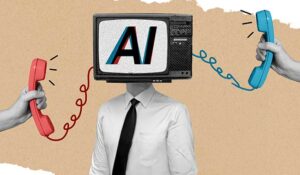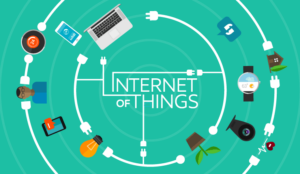Subhikshaa Ganesh of Freshworks discusses how contact centres are expected to evolve and adapt to the ever-changing needs.
The year is 2040. And contact centres no longer exist.
According to a study by the International Customer Management Institute, 74% of customers use three or more channels to access customer support.
This means that contact centres are adopting new technology to meet customer needs across different channels, so they aren’t expected to go extinct anytime in the foreseeable future.
The contact centre is the primary link that connects customers to a business, so they have begun adopting upcoming technologies like AI and ML to serve customers better.
Omnichannel engagement is becoming the norm, and so contact centres as a touchpoint are evolving to give customers a satisfactory experience.
So put on your smart glasses and get ready to see what the contact centre of the future is going to look like!
Contact Centres Will Become a Relationship Hotspot
15 years ago the average consumer typically used two touchpoints when buying an item and only 7% regularly used more than four.
Today consumers use an average of almost six touchpoints, with nearly 50% regularly using more than four. – Knexus Group
To meet these needs, contact centres will start catering to consumers across all channels, thus evolving to ‘contact’ centres as opposed to ‘call’ centres. They will become a relationship hotspot through which customers can contact the business through any channel/platform of their choice.
The smartphone adoption rate in the US has increased from 20.2% in 2010 to 72.2% in 2020, and social media engagement is blooming as a point of contact.
Live chat is one other platform that is seeing an upward trend with consumers’ constant need to switch between apps.
Contact centres will continue taking calls as well; data from Userlike showed that people would chat with a bot to connect with an agent who can assist with their specific enquiry.
Agents will be able to initiate calls from the chat interface; augmented reality will help businesses create a persona for themselves as the chat channel becomes widely adopted as a point of contact.
“It’s not just about how well you treat the customer any more, but how easy it is for the customer to interact with you.” – Chris Marron
Contact Centres Will Become Fully Remote
According to the US Bureau of Labor Statistics, the number of US remote workers increased by 115% between the years 2005 and 2015.
Thanks to the cloud and the coronavirus, remote working has caught on way earlier than it would have under normal circumstances. Cloud-based phone systems allow for the flexibility to work anywhere, which means that contact centres may not be office based any more.
Supervisors will be working from mobile locations as they will have the ability to monitor agents with real-time stats accessible from their smartphones.
Cloud-based phone systems provide mobile-based apps for agents as well, so they need not even be at their system to be able to take calls.
Fully remote teams will eventually become the norm, with agents working from all over the world, facilitating location-based services. Callers will be predictively routed to the agent in their locality if there is any requirement for field service.
For example, a caller requiring a hardware replacement will be predictively routed by Artificial Intelligence to the agent working in that locality, which will help speed up the resolution process.
Speech Analytics and Voice Biometrics Will Replace Standard Security Questions
Investment in AI will increase more than 300% over the next year – Forrester.
Security questions like: “What is your dog’s name?” will become obsolete within the next ten years. Customer validation is likely to happen through voice biometrics, where the unique voiceprints of the customer will be the answer to security concerns.
AI-based voice recognition will evaluate a person’s biometric voice signature based on previous inputs by analysing their voice patterns like speed, tone, and pitch. This will eventually become the security checkpoint that validates customers.
Customers will no longer need to wait for an agent to troubleshoot issues like password reset and account activation.
Voicebot technology will enable bots to respond to common queries. Intelligent routing like speech IVR will help route them efficiently to the right agent.
Real-time analytics will help see agent and caller sentiment in real time. By monitoring these details, supervisors will be able to hop in if the situation seems to escalate.
AI can detect calls where the customer’s emotion is plummeting by analysing the tone and pitch of their voice and flag them.
Supervisors monitoring these stats will eventually be able to either guide their agents or hop in themselves to defuse the situation.
The IoT Will Redefine Customer Experience
Research of more than 350 executives and managers conducted by ICMI and Oracle finds that 57 percent of respondents say their organizations intend to support IoT/connected technologies within the next six to 12 months, in a 21 percent jump from today.
For those who don’t know what the Internet of Things (IoT) is, it’s the interconnection of physical devices that are sharing information via the internet.
The IoT is what powers your smart home devices. Here’s a small example of how IoT will reshape how contact centres look at customer service.
Your smart home TV might be malfunctioning, and you might not notice it probably due to limited usage.
In this scenario, your smart home TV will raise a concern and even initiate contact with the relevant support centre to report the issue.
All this will happen in the back end, and you will eventually receive a phone call from the support rep asking what the problem with your TV is.
Often, there will be a human who uploads a solution to the problem, and it might get fixed without you being aware of it.
AI adoption in call centres will increase as a result to keep up with the sophistication that IoT brings about. Alexa and Siri will evolve so that we don’t even have to pick up our phones to shout an instruction.
You can call out to your speaker to log an issue, and it will initiate support via the faulty product, basically helping it fix itself.
IoT will help you take care of your customers’ needs proactively.
From the same study as above: while only 35 percent of organizations currently use AI, 85 percent of respondents would like to see their companies expand its use or adopt it.
Widespread adoption of AI will eventually help contact centres deal with the explosion in IoT-based devices.
Quality Over Quantity Will Be the New Customer Service Mantra
Personalization has become a key aspect of customer service. With the advent of multiple technology devices, millennials are hopping between devices and channels when interacting with a business.
It’s not just about keeping up with the channel/device switching that companies need to worry about, they also have to evolve to keep up with the technology as well. New apps and social networking channels are launched every now and then.
As the popularity of these channels grows, customers expect to be able to interact with businesses on their preferred channel. WhatsApp is an example of one such platform.
How well contact centres can adapt and meet these needs will eventually determine their success.
The primary goal of agents will not be to answer as many calls as possible but to provide a quality and timely response across different channels that consumers prefer.
Transactional metrics like the average handle time and the number of calls handled will no longer be the benchmark for measuring agent productivity and performance.
The ultimate competitive advantage will be to gain a prominent social media presence and recommendation, or as the millennials like to call it – “a shoutout”.
What Significant Changes Can We Expect?
The next ten years could see a major change in the way contact centres operate and interact with customers.
We can expect to see an increasing number of interactions moving from human to chat and bots.

Subhikshaa Ganesh
Technology is rapidly evolving, and there are multiple possibilities in which contact centres will adapt and change to meet this growth.
AI will revolutionize the way customer interactions happen; we can already see bot adoptions on the rise. Virtual teams will catch on with teams and agents working from diverse locations.
It will be interesting to see how AI is going to help transform this vital touchpoint.
To find out about Freshworks’ AI contact centre solutions, visit www.freshworks.com
Author: Robyn Coppell
Published On: 24th Jun 2020 - Last modified: 1st Jul 2020
Read more about - Guest Blogs, Freshworks















